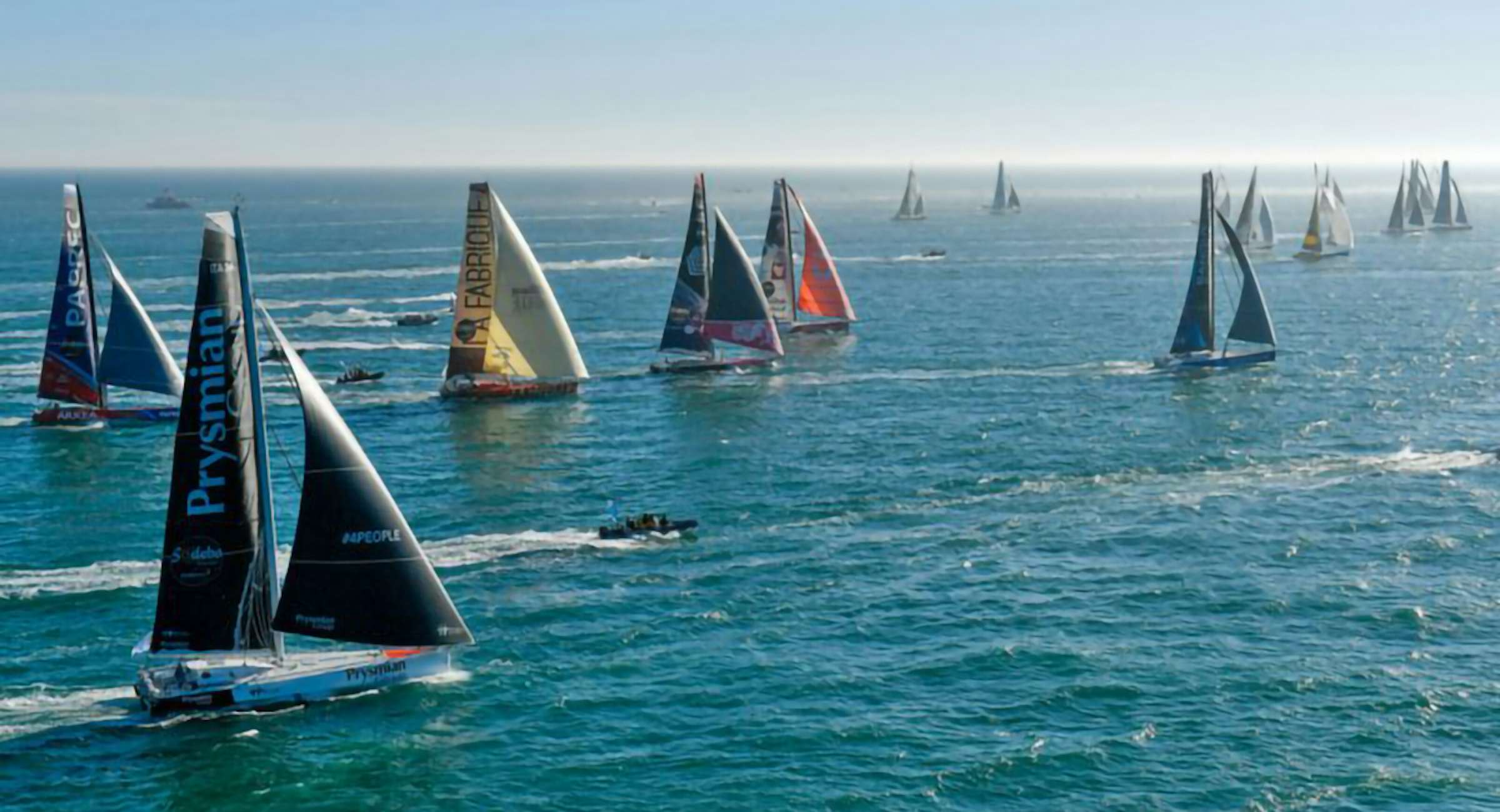
Is the Vendée Globe yacht race the toughest sporting event in the world?
Image: © 2020 Jean-Louis Carli / Alea
America’s Cup fever is picking up in New Zealand, but there’s another yachting event now underway that’s capturing world-wide attention. And it’s an event of huge consequence.
It’s hard to imagine an event much tougher than the Vendée Globe. In a nutshell: one person, one boat, one around the world course, without assistance.
And they’re away! On November 8, 33 boats piloted by skippers of nine different nationalities launched into the Atlantic from the French city of Les Sables-d’Olonne (also the finish line) to begin their journey past three ocean capes - Good Hope, Leeuwin and Horn - and through the waters of the Atlantic, Pacific and Indian oceans.
Not for the timid, this non-stop, single-handed planet circumnavigation crosses 24,000 miles (45,000 kilometers) of ocean. It’s far from a smooth sail - picture hammering 50-foot waves and 80 knot gusts and waters below 60 degrees latitude circling the Antarctic. Add to that fog and obstacles such as icebergs, sleeping whales and sometimes containers that have fallen from ships. Endurance is not short term either - this event typically spans at least 74 days.
Freelance writer Tom Mullen describes the Vendée Globe as the toughest sporting event in the world - extreme, technical, challenging, harrowing and sometimes deadly.
“This is an event where—for months—competitors may sleep only two hours a day while circumnavigating their deft, aerodynamic sailing craft in a brutally tight circle around the Antarctic. This is a race where half of all contestants fail to finish due to snapping masts, smashed rudders, failed sails, ocean collisions, sudden capsizing, botched steering or (mention it not) becoming lost at sea.
“This is a race that—afterwards—sailors will recall hallucinations, epiphanies or abandoning fate to higher powers, though most remain so transfixed on tasks that they lack time to reflect on loneliness while traversing desolate, remote seascapes to a finish line only 89 humans have ever crossed (two percent of the number who have summited Mount Everest),” Tom explains. The public now call this event the Everest of the Seas.
New Zealander Conrad Colman is one of the brave. This New Zealand/US skipper competed last time (the event is held every four years) and spoke of the aquatically desolate route with huge stretches of empty ocean fringed, to the south, by icebergs. It was easy to feel like “the last man on earth,” he says.
Keeping track of the current event
For event highlights stay tuned via this website which includes the list of skippers, race information (videos, tracking map, statistics etc) an up-to-date news page with skipper updates etc. There is also a Vendée Globe facebook page.
Competitor makeup
The median age of skippers this year is 42, with the youngest (Swiss) contestant being 27 and the oldest (French) 61. Six are female and 27 are male.
The event has been quintessentially French (22 of this edition’s 33 contenders are from France) but there is an expanding and active interest in increasing the worldwide audience.
Each winner of the Vendée Globe receives his/her trophy for life. Who will be the next one to raise it above his/her head? The answer will be revealed in January 2021.
Some history
This gruelling even was first held in 1989. It followed in the wake of the Golden Globe which had initiated the first circumnavigation of this type via the three capes (Good Hope, Leeuwin and Horn) in 1968.
It is named after the French administrative department on the Atlantic coast where the event starts and finishes.
The currently under-way event is the ninth.
Since its inception, race completion times have been shaved from 109 to 74 days.
French skippers have won every edition of this race.
The boats
All entrant boats are 18.28 meters long with masts about half again that length and downwind sails averaging 590 square meters in area—or almost half the surface area of an Olympic swimming pool.
They are described as sleek, extraordinary craft—fusions of sails, hulls and foils that are neither small nor timid but designed to deftly slice across the planet while also enduring wrathful forces.
In 2016 racers began using hydrofoils, to deftly transform motion into buoyancy and push boats out of ocean waters so that more bulk passes through the lower friction of air instead of through viscous ocean waters. Thanks to such advancements, boats are now able to maintain average speeds of 30 knots (34 mph, or 55 km/hr) for several hours at a time.
Advancements
Since the previous 2016-2017 race edition, innovations in boat designs have seen improvements in many aspects including foils, data, electronics and skipper safety.
More boat cabins are now protected, and more navigation tasks can be managed from within. Also, an improved source of navigation data includes weather predictions for the Southern Ocean—the result of more satellites having been launched during the last decade.
For this edition, 18 of 33 boats will include an electronic collision avoidance system, known as Oscar. Oscar can scan a 120-degree cone of ocean in front of a boat, detecting floating objects and - thanks to artificial intelligence partially built from a data base that includes 50 million images - can alert navigators with different sounding alarms when objects are 400, 300 and 200 meters ahead.
This Vendée Globe will see 33 individuals take technology, skill and endurance to levels never achieved before.